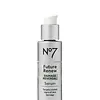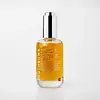What's inside
What's inside
 Key Ingredients
Key Ingredients

 Benefits
Benefits

 Concerns
Concerns

 Ingredients Side-by-side
Ingredients Side-by-side

Water
Skin ConditioningDimethicone
EmollientButylene Glycol
HumectantGlycerin
HumectantMethyl Gluceth-20
HumectantIsononyl Isononanoate
EmollientPolysilicone-11
Niacinamide
SmoothingPhenoxyethanol
PreservativeAcrylates/Beheneth-25 Methacrylate Copolymer
Tocopheryl Acetate
AntioxidantSilica
AbrasivePanthenol
Skin ConditioningPolysorbate 20
EmulsifyingCaprylyl Glycol
EmollientAmmonium Acryloyldimethyltaurate/Vp Copolymer
Potassium Hydroxide
BufferingXanthan Gum
EmulsifyingSodium Hyaluronate
HumectantHydrolyzed Rice Protein
Skin ConditioningDecyl Glucoside
CleansingPropylene Glycol
HumectantEthylhexylglycerin
Skin ConditioningAscorbyl Glucoside
AntioxidantPropanediol
SolventPentylene Glycol
Skin ConditioningTetrasodium EDTA
Hexylene Glycol
EmulsifyingT-Butyl Alcohol
PerfumingSodium Benzoate
MaskingMorus Alba Leaf Extract
Skin ConditioningPalmitoyl Tetrapeptide-94
Palmitoyl Tetrapeptide-95
Water, Dimethicone, Butylene Glycol, Glycerin, Methyl Gluceth-20, Isononyl Isononanoate, Polysilicone-11, Niacinamide, Phenoxyethanol, Acrylates/Beheneth-25 Methacrylate Copolymer, Tocopheryl Acetate, Silica, Panthenol, Polysorbate 20, Caprylyl Glycol, Ammonium Acryloyldimethyltaurate/Vp Copolymer, Potassium Hydroxide, Xanthan Gum, Sodium Hyaluronate, Hydrolyzed Rice Protein, Decyl Glucoside, Propylene Glycol, Ethylhexylglycerin, Ascorbyl Glucoside, Propanediol, Pentylene Glycol, Tetrasodium EDTA, Hexylene Glycol, T-Butyl Alcohol, Sodium Benzoate, Morus Alba Leaf Extract, Palmitoyl Tetrapeptide-94, Palmitoyl Tetrapeptide-95
Water
Skin ConditioningButylene Glycol
HumectantGlycerin
Humectant1,2-Hexanediol
Skin ConditioningCaprylic/Capric/Succinic Triglyceride
EmollientHamamelis Virginiana Water
AstringentAlthaea Officinalis Root Extract
Skin ConditioningAvena Sativa Kernel Extract
AbrasivePropanediol
SolventPentylene Glycol
Skin ConditioningCarbomer
Emulsion StabilisingHydrolyzed Rice Protein
Skin ConditioningCaprylyl Glycol
EmollientSalix Alba Bark Extract
AstringentEquisetum Arvense Extract
AstringentGlycyrrhiza Glabra Root Extract
BleachingHarpagophytum Procumbens Root Extract
Skin ConditioningCaprylic/Capric Triglyceride
MaskingPolyglutamic Acid
Skin ConditioningSodium Hydroxide
BufferingSodium Benzoate
MaskingCitric Acid
BufferingPotassium Sorbate
PreservativePhenethyl Alcohol
MaskingXanthan Gum
EmulsifyingGlyceryl Caprylate
EmollientBacillus Ferment
Skin ConditioningSodium Carrageenan
Emulsion StabilisingAlchemilla Vulgaris Extract
AstringentUndaria Pinnatifida Extract
Skin ConditioningPseudoalteromonas Ferment Extract
HumectantAcetyl Hexapeptide-1
Skin ConditioningMaris Sal
Skin ConditioningWater, Butylene Glycol, Glycerin, 1,2-Hexanediol, Caprylic/Capric/Succinic Triglyceride, Hamamelis Virginiana Water, Althaea Officinalis Root Extract, Avena Sativa Kernel Extract, Propanediol, Pentylene Glycol, Carbomer, Hydrolyzed Rice Protein, Caprylyl Glycol, Salix Alba Bark Extract, Equisetum Arvense Extract, Glycyrrhiza Glabra Root Extract, Harpagophytum Procumbens Root Extract, Caprylic/Capric Triglyceride, Polyglutamic Acid, Sodium Hydroxide, Sodium Benzoate, Citric Acid, Potassium Sorbate, Phenethyl Alcohol, Xanthan Gum, Glyceryl Caprylate, Bacillus Ferment, Sodium Carrageenan, Alchemilla Vulgaris Extract, Undaria Pinnatifida Extract, Pseudoalteromonas Ferment Extract, Acetyl Hexapeptide-1, Maris Sal
 Reviews
Reviews

Ingredients Explained
These ingredients are found in both products.
Ingredients higher up in an ingredient list are typically present in a larger amount.
Butylene Glycol (or BG) is used within cosmetic products for a few different reasons:
Overall, Butylene Glycol is a safe and well-rounded ingredient that works well with other ingredients.
Though this ingredient works well with most skin types, some people with sensitive skin may experience a reaction such as allergic rashes, closed comedones, or itchiness.
Learn more about Butylene GlycolCaprylyl Glycol is a humectant and emollient, meaning it attracts and preserves moisture.
It is a common ingredient in many products, especially those designed to hydrate skin. The primary benefits are retaining moisture, skin softening, and promoting a healthy skin barrier.
Though Caprylyl Glycol is an alcohol derived from fatty acids, it is not the kind that can dry out skin.
This ingredient is also used as a preservative to extend the life of products. It has slight antimicrobial properties.
Learn more about Caprylyl GlycolGlycerin is already naturally found in your skin. It helps moisturize and protect your skin.
A study from 2016 found glycerin to be more effective as a humectant than AHAs and hyaluronic acid.
As a humectant, it helps the skin stay hydrated by pulling moisture to your skin. The low molecular weight of glycerin allows it to pull moisture into the deeper layers of your skin.
Hydrated skin improves your skin barrier; Your skin barrier helps protect against irritants and bacteria.
Glycerin has also been found to have antimicrobial and antiviral properties. Due to these properties, glycerin is often used in wound and burn treatments.
In cosmetics, glycerin is usually derived from plants such as soybean or palm. However, it can also be sourced from animals, such as tallow or animal fat.
This ingredient is organic, colorless, odorless, and non-toxic.
Glycerin is the name for this ingredient in American English. British English uses Glycerol/Glycerine.
Learn more about GlycerinHydrolyzed Rice Protein is protein extracted from rice. This ingredient is rich in antioxidants and peptides.
Studies show this ingredient may help with blocking the melanin creation process when skin is exposed to UV.
Pentylene glycol is typically used within a product to thicken it. It also adds a smooth, soft, and moisturizing feel to the product. It is naturally found in plants such as sugar beets.
The hydrophilic trait of Pentylene Glycol makes it a humectant. As a humectant, Pentylene Glycol helps draw moisture from the air to your skin. This can help keep your skin hydrated.
This property also makes Pentylene Glycol a great texture enhancer. It can also help thicken or stabilize a product.
Pentylene Glycol also acts as a mild preservative and helps to keep a product microbe-free.
Some people may experience mild eye and skin irritation from Pentylene Glycol. We always recommend speaking with a professional about using this ingredient in your routine.
Pentylene Glycol has a low molecular weight and is part of the 1,2-glycol family.
Learn more about Pentylene GlycolPropanediol is an all-star ingredient. It softens, hydrates, and smooths the skin.
It’s often used to:
Propanediol is not likely to cause sensitivity and considered safe to use. It is derived from corn or petroleum with a clear color and no scent.
Learn more about PropanediolSodium Benzoate is a preservative. It's used in both cosmetic and food products to inhibit the growth of mold and bacteria. It is typically produced synthetically.
Both the US FDA and EU Health Committee have approved the use of sodium benzoate. In the US, levels of 0.1% (of the total product) are allowed.
Sodium benzoate works as a preservative by inhibiting the growth of bacteria inside of cells. It prevents the cell from fermenting a type of sugar using an enzyme called phosphofructokinase.
It is the salt of benzoic acid. Foods containing sodium benzoate include soda, salad dressings, condiments, fruit juices, wines, and snack foods.
Studies for using ascorbic acid and sodium benzoate in cosmetics are lacking, especially in skincare routines with multiple steps.
We always recommend speaking with a professional, such as a dermatologist, if you have any concerns.
Learn more about Sodium BenzoateWater. It's the most common cosmetic ingredient of all. You'll usually see it at the top of ingredient lists, meaning that it makes up the largest part of the product.
So why is it so popular? Water most often acts as a solvent - this means that it helps dissolve other ingredients into the formulation.
You'll also recognize water as that liquid we all need to stay alive. If you see this, drink a glass of water. Stay hydrated!
Learn more about WaterXanthan gum is used as a stabilizer and thickener within cosmetic products. It helps give products a sticky, thick feeling - preventing them from being too runny.
On the technical side of things, xanthan gum is a polysaccharide - a combination consisting of multiple sugar molecules bonded together.
Xanthan gum is a pretty common and great ingredient. It is a natural, non-toxic, non-irritating ingredient that is also commonly used in food products.
Learn more about Xanthan Gum